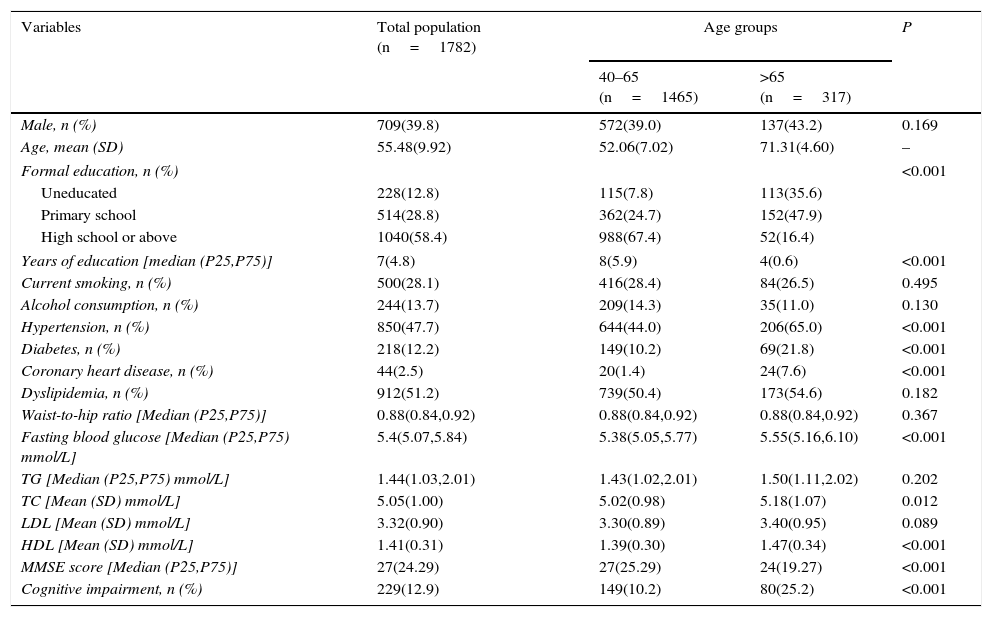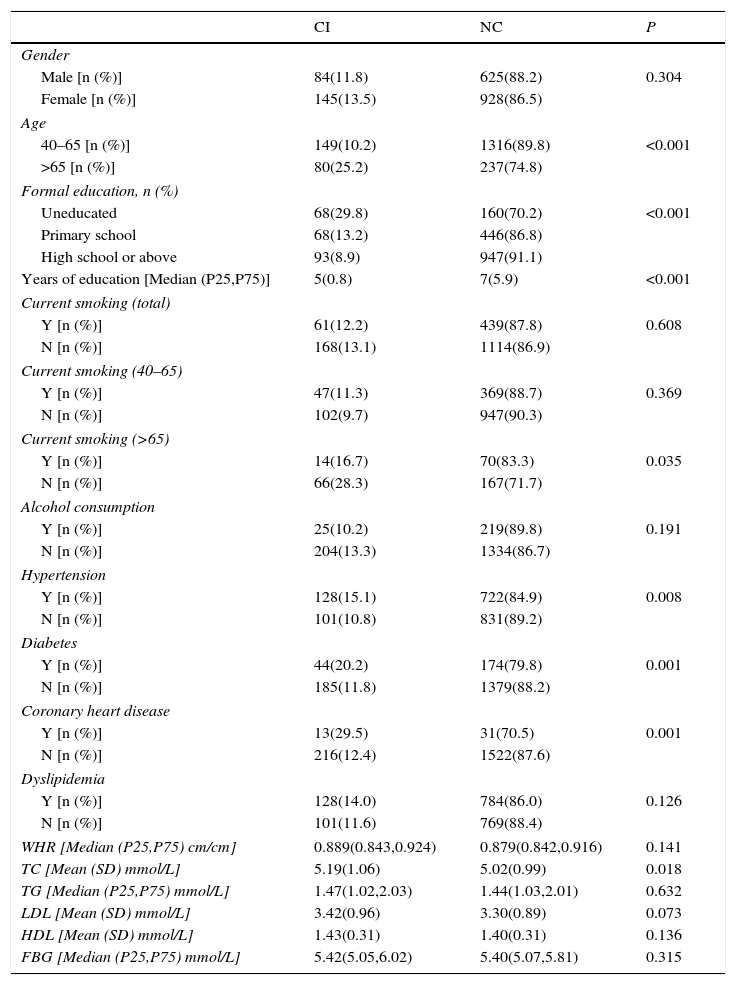Cigarette smoking is a modifiable risk factor for cognitive impairment, while the relationship between current smoking and cognitive impairment is not fully understood. The objectives were to identify a possible association between current smoking and cognitive impairment depending on age in the Chinese rural population.
MethodsData for the study consisted of 1782 participants (40 years and older) who lived in a rural village in the vicinity of Xi’an, China. Data about smoking history and cognitive function were collected. Cognitive function was scored by the Mini-Mental State Examination. The effect of age on the relationship between current smoking and cognitive impairment was analyzed with interaction and stratified analysis by logistic regression models.
ResultsInteraction analysis showed that current smoking is positively related with cognitive impairment (odds ratio [OR]=9.067; 95% confidence interval [95% CI] 1.305–62.979; P=0.026). However, the interaction term, age by current smoking, is negatively related with cognitive impairment (OR=0.969; 95%CI 0.939–0.999; P=0.045). Stratified logistic regression showed that in the 40–65 years of age sublayer, OR of current smoking is 1.966 (P=0.044), whereas in the >65 years of age sublayer, the OR is 0.470 (P=0.130). This means that the association between current smoking and cognitive impairment with age might be positive (OR>1) in lower age sublayers, but no significant difference in higher age sublayers.
ConclusionsIn conclusion, current smoking might be positively associated with cognitive impairment in the middle-aged but the relationship declines with increasing age.
El consumo de tabaco es un factor de riesgo modificable para el deterioro cognitivo, no entendiéndose plenamente la relación entre dichas situaciones. El objetivo de este trabajo fue identificar la posible asociación entre el consumo actual de tabaco y el deterioro cognitivo, dependiendo de la edad, en la población rural de China.
MétodosEl estudio incluyó a 1.782 participantes (de 40 años de edad o más) que vivían en un pueblo rural de las cercanías de Xi’an (China). Se recogieron datos acerca del historial de consumo de tabaco y la función cognitiva. La función cognitiva se puntuó mediante la escala Mini-Mental State Examination. El efecto de la edad en la relación entre el consumo de tabaco actual y el deterioro cognitivo se analizó mediante análisis de interacción y estratificación, utilizando modelos de regresión logística.
ResultadosEl análisis de interacción reflejó que el consumo de tabaco actual guarda una relación positiva con el deterioro cognitivo (odds ratio [OR]=9,067; intervalo de confianza del 95% [IC 95%] 1,3056-2,979; p=0,026). Sin embargo, el plazo de interacción y la edad del tabaquismo actual guardan una relación negativa con el deterioro cognitivo (OR=0,969; IC 95% 0,939-0,999; p=0,045). La regresión logística estratificada reflejó que en el subestrato de 40 a 65 años, la OR del tabaquismo actual es de 1,966 (p=0,044), mientras que en el subestrato >65 años, la OR es de 0,470 (p=0,130). Esto significa que la asociación entre el tabaquismo actual y el deterioro cognitivo con la edad podría ser positiva (OR>1) en los subestratos de menor edad, aunque no existe una diferencia significativa en subestratos de mayor edad.
ConclusionesEn conclusión, el tabaquismo actual podría estar positivamente asociado al deterioro cognitivo en la edad mediana, aunque dicha relación disminuye con el incremento de la edad.
Artículo
Comprando el artículo el PDF del mismo podrá ser descargado
Precio 19,34 €
Comprar ahora










